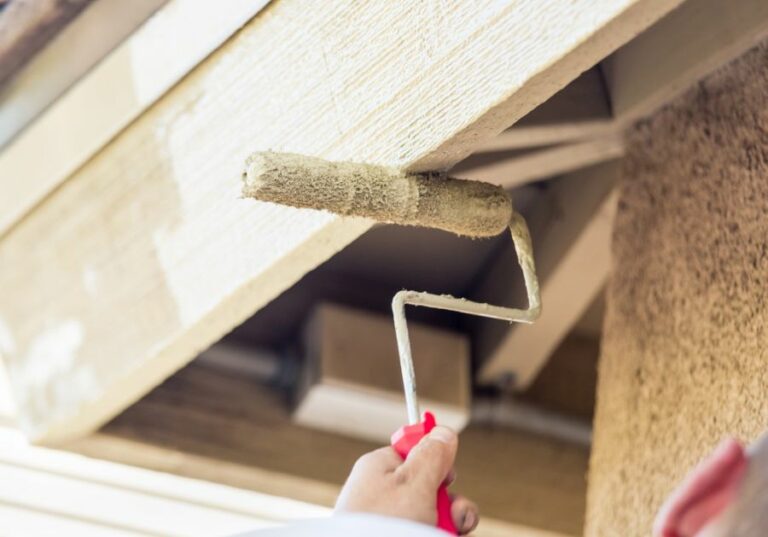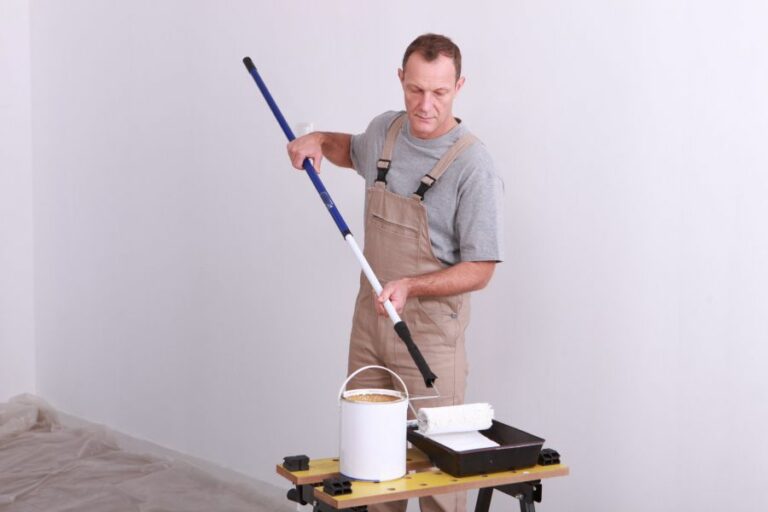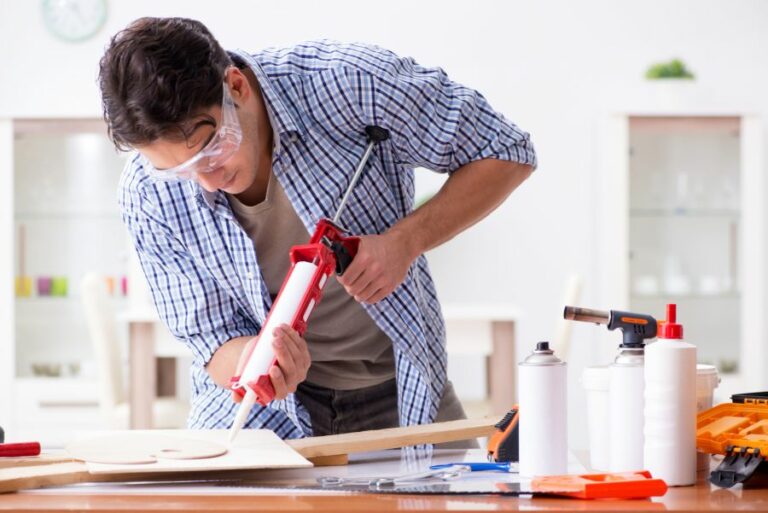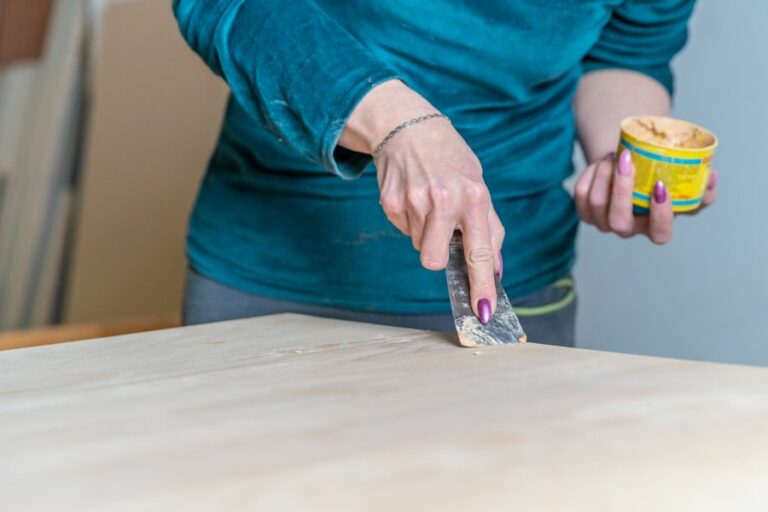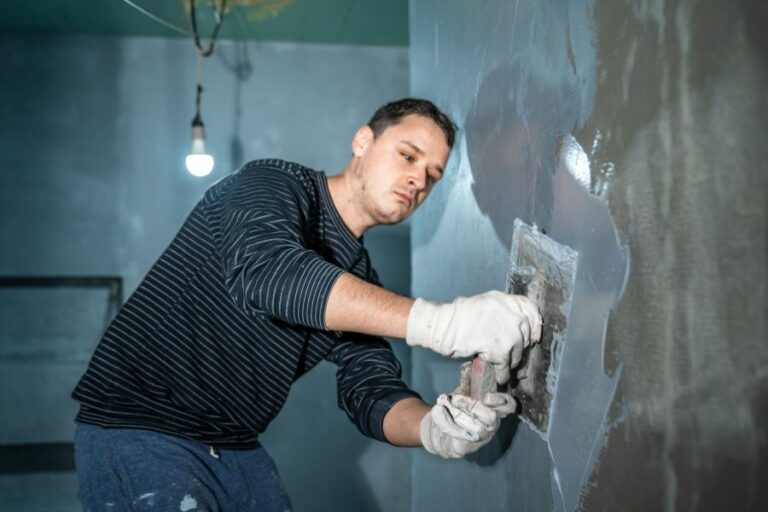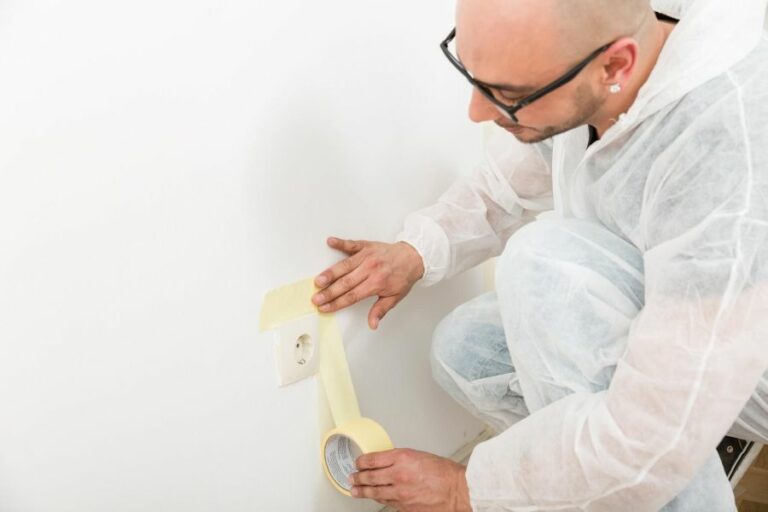Optimal Surface Preparation Methods, 25 Things You Should Know
Are you struggling to determine the best surface preparation methods for your project? Look no further, as we have delved deep into this topic and have the answers you seek. Surface preparation ensures a strong bond between the applied material and the surface. From painting to various coatings, selecting the optimal method for your situation is essential for long-lasting results.
Optimal surface preparation methods:
Optimal surface preparation methods include mechanical techniques like abrasive blasting and grinding, chemical methods such as degreasing and pickling, and surface activation methods like plasma and corona treatments. Proper preparation ensures a strong bond, improved adhesion, longer-lasting coatings, and better performance.

Delve into the world of surface preparation as we uncover the most effective methods for optimal results! Keep reading to discover expert insights, the latest technology, and invaluable tips to enhance your surface preparation process. Don’t miss out!
Contents
- 1 Best Practices for Surface Preparation Techniques
- 2 Effective Techniques for Preparing Surfaces
- 3 Essential Surface Preparation Techniques Explained
- 4 Top Surface Coating Processes for Optimal Results
- 5 Diverse Surface Preparation Approaches for Repairs
Best Practices for Surface Preparation Techniques
Surface preparation is crucial in many processes, including painting, plating, and bonding. It involves cleaning, degreasing, and otherwise preparing a surface to ensure a strong bond between the substrate and the coating or adhesive.
• Mechanical Surface Preparation Methods
– Abrasive Blasting
Abrasive blasting is one of the most common and effective methods for surface preparation. It relies on a high-velocity stream of abrasive particles to remove dirt, rust, and existing coatings from the surface, providing a clean and rough surface ideal for bonding.
I recommend using suitable abrasive media for each specific job, as using the wrong media can damage the substrate. Common abrasive materials include sand, glass beads, steel grit, and walnut shells.
– Grinding and Polishing
Grinding and polishing are useful for preparing metal surfaces, particularly for weld joints. Grinding removes any surface inconsistencies while polishing smooths out the surface, reducing the risk of poor adhesion or coating failure.
For optimal surface preparation, use a suitable type and grit of grinding wheel or abrasive pad, and work in a consistent pattern to achieve a uniform surface finish.
• Chemical Surface Preparation Methods
– Degreasing
Degreasing is critical in removing oils, grease, and other contaminants from the surface. Common methods include solvent cleaning and alkaline cleaning. Solvent cleaning uses organic solvents, such as acetone or isopropyl alcohol, to dissolve and remove greases and oils.
Alkaline cleaning relies on basic solutions, like sodium hydroxide or potassium hydroxide, and is especially effective for cleaning metal surfaces.
Ensure to rinse the surface thoroughly with water after degreasing to remove any residual chemicals, as these can interfere with adhesion.
– Pickling
Pickling is a chemical process used primarily for metal surfaces to remove rust, scale, or other oxides. This method involves immersing the substrate in a liquid solution of strong acids, like hydrochloric or sulfuric acid, to dissolve the unwanted oxides.
Following pickling, always neutralize the surface with alkaline solutions or water rinsing to prevent the risk of hydrogen embrittlement or other adverse effects on the substrate.
• Surface Activation Methods
– Plasma Treatment
Plasma treatment is a modern and effective method for activating surfaces and improving adhesion. In this process, a gas (usually air or argon) is ionized to create a plasma, which is then applied to the surface.
This alters the surface chemistry and morphology, promoting better bonding with coatings and adhesives.
Plasma treatment is particularly useful for preparing plastics and other non-metallic substrates, as it does not require harsh chemicals or mechanical action.
– Corona Treatment
Corona treatment is another surface activation method, particularly suitable for plastics and other non-conductive materials. It uses high-voltage electrical discharge to create ozone, which reacts with the surface, increasing its surface energy and wettability.
While both plasma and corona treatments are effective, I recommend plasma treatment when available, as it generally provides longer-lasting and more consistent results.
• Final Thoughts
Successful surface preparation depends on selecting the most suitable method or combination of methods for your specific application, considering factors such as the type of substrate, the nature of the contaminants, and the desired outcome.
Proper surface preparation will result in improved adhesion, longer-lasting coatings, and better overall performance.
For more information on surface preparation methods and best practices, consider consulting resources from The Society for Protective Coatings (SSPC) or the NACE International organization.
Remember that optimal surface preparation is critical and will contribute significantly to the success of your project.
Effective Techniques for Preparing Surfaces
Surface preparation is a critical step in any coating or treatment process. It determines the success and longevity of the final product.
• Abrasive Blasting
One of the most common methods of surface preparation is abrasive blasting. It involves propelling abrasive particles at high velocities onto the surface to remove contaminants and create a profile suitable for coating or treatment.
– Types of Abrasive Blasting
There are several types of abrasive blasting, including:
- Dry abrasive blasting: Utilizes compressed air to propel dry abrasive particles.
- Wet abrasive blasting: Combines water with abrasive particles, reducing dust and heat generation.
- Vacuum blasting: Uses a vacuum to simultaneously blast and recover abrasive particles, minimizing waste and environmental impact.
I recommend selecting the appropriate type of abrasive blasting based on factors such as the surface material, desired profile, and environmental constraints.
• Chemical Cleaning
Chemical cleaning is another method of surface preparation that employs chemicals, solvents, or other agents to remove contaminants from the surface. This can be achieved using immersion, spray, or wipe techniques.
– Types of Chemical Cleaning
- Acid cleaning: Removes rust, scale, and other oxides by dissolving them with acidic solutions.
- Alkaline cleaning: Uses alkaline solutions to remove grease, oil, and other organic contaminants.
- Degreasing: Utilizes solvents or vapor degreasing techniques to remove heavy grease and oils.
I recommend employing chemical cleaning when abrasive techniques may damage the substrate or when environmental restrictions apply.
However, using appropriate personal protective equipment (PPE) and following safety guidelines is crucial to avoid chemical exposure and environmental contamination.
• Mechanical Cleaning
Mechanical cleaning involves the use of physical force and tools to remove contaminants and prepare the surface. This method is often employed for small-scale applications or for surfaces unsuitable for abrasive or chemical cleaning.
– Types of Mechanical Cleaning
- Grinding: Employs abrasive wheels or discs to remove surface contaminants and create a smooth, uniform surface.
- Scraping: Utilizes hand tools, such as scrapers or wire brushes, to remove loose paint, rust, and other contaminants.
- Power brushing: Uses power-driven rotary brushes for more efficient mechanical cleaning and profiling.
I recommend mechanical cleaning for localized surface preparation or when other methods may damage the substrate or pose environmental risks.
• High-Pressure Water Jetting
High-pressure water jetting (HPWJ) is an alternative method of surface preparation that utilizes high-velocity water jets to remove contaminants, coatings, and surface profiles.
This method is especially effective for large-scale applications and offers various advantages, such as reduced waste and environmental impact.
– Advantages of High-Pressure Water Jetting
- Little to no dust generation: Unlike abrasive blasting, HPWJ generates minimal dust, improving working conditions and environmental sustainability.
- Lower waste generation: HPWJ produces less waste compared to abrasive blasting, reducing cleanup and disposal costs.
- Reduced impact on the substrate: HPWJ minimizes damage to the underlying surface, preserving its integrity and extending its service life.
I recommend employing high-pressure water jetting for large-scale surface preparation projects or situations where other methods may have adverse effects on the substrate or result in environmental concerns.
• The Importance of Surface Profile
Regardless of the chosen method of surface preparation, it is crucial to achieve an appropriate surface profile for the intended coating or treatment. The correct profile allows for optimal adhesion and longevity of the final product.
Consider factors such as the material’s hardness, roughness, and surface area to determine the most suitable preparation method.
• In Conclusion
Various methods of surface preparation exist, each with its advantages and disadvantages. The key to success lies in understanding the specific requirements of the project and selecting the most suitable preparation method.
By doing so, you can ensure the longevity and performance of your coating or treatment and preserve the integrity of the substrate.
| Techniques for Preparing Surfaces |
|---|
| Manual Cleaning |
| Power Tool Cleaning |
| Abrasive Blast Cleaning |
| Water Jetting |
| Chemical Cleaning |
| Etching |
| Flame Cleaning |
| Laser Cleaning |
| Ultrasonic Cleaning |
Essential Surface Preparation Techniques Explained
Surface preparation is a crucial step in the coating and painting industry. Proper surface preparation ensures the success of a coating, as it directly affects the adhesion of the coating and its longevity.
Among various surface preparation techniques, abrasive blasting is the most common and widely used method.
• What is Abrasive Blasting?
Abrasive blasting is a process that involves propelling a stream of abrasive material, such as sand, steel grit, or crushed glass, against a surface using high-pressure air or water.
The impact of the abrasive material removes contaminants, rust, and old coatings, as well as creating a surface profile that helps the new coating adhere.
Abrasive blasting can be divided into various types based on the abrasive material used, equipment, and operating media. Some common types include:
- Sandblasting
- Soda blasting
- Steel grit or shot blasting
- Wet abrasive blasting
- Dry ice blasting
• Advantages of Abrasive Blasting
– Efficient and Cost-Effective
Abrasive blasting is a time-saving approach to surface preparation compared to conventional methods like wire brushing, hand scrapping, or chemical cleaning. It covers large surfaces quickly, which leads to fewer labor hours and overall cost reduction.
– Comprehensive Cleaning
The high-pressure impact of abrasive materials ensures contaminants, rust, old coatings, and mill scale are effectively removed from the surface. This helps in providing a uniform and clean surface for better adhesion of the new coating material.
– Surface Profiling
Abrasive blasting not only cleans but also roughens the surface, creating a surface profile that enhances the adhesion of the coating. The surface profile can be adjusted by controlling the type and size of the abrasive material used, allowing for better adhesion based on the specific requirements of the project.
– Environmentally Friendly
When compared to chemical cleaning methods, abrasive blasting is more environmentally friendly. Abrasive materials like soda and crushed glass are non-toxic, and dry ice blasting leaves no residue, making it a suitable option for sensitive environments.
Additionally, some types of abrasive blasting can be recycled and reused, further reducing waste.
• Considerations in Abrasive Blasting
– Selection of Abrasive Material
The choice of abrasive material plays a vital role in achieving the desired surface finish and profile. Factors to consider when selecting an abrasive material include the surface material, coating type, environmental concerns, and the cost of the abrasive.
For example, soda blasting is ideal for delicate surfaces, while steel grit is more suitable for aggressive cleaning and profiling.
– Equipment Setup and Maintenance
The efficiency of abrasive blasting largely depends on the proper setup and maintenance of the equipment, including the nozzle size, blast pressure, and abrasive flow rate.
Regular equipment inspection and maintenance can prevent unexpected breakdowns and ensure consistent surface preparation quality.
– Operator Safety
Abrasive blasting operations can create hazards if not carried out with proper safety precautions. These include eye and skin injuries from abrasive particles, hearing damage from noise, respiratory issues from inhaling dust and fumes, and physical injuries from high-pressure equipment.
Operators should wear appropriate personal protective equipment (PPE) like goggles, gloves, hearing protection, respirators, and protective clothing, while also adhering to standard safety procedures and guidelines.
– Containment and Waste Disposal
The waste generated from abrasive blasting needs to be contained and properly disposed of, especially in cases where hazardous coatings like lead paint are being removed.
Proper containment systems, like plastic sheeting or portable blast chambers, can help minimize the spread of debris and restrict environmental exposure.
• Conclusion
In conclusion, abrasive blasting is the most common and versatile technique of surface preparation due to its efficiency, effectiveness, and adaptability.
By selecting the appropriate abrasive material and following proper equipment and safety procedures, abrasive blasting can deliver optimal surface preparation that contributes to the success of a coating or painting project.
Top Surface Coating Processes for Optimal Results
Selecting an ideal surface coating process is paramount to the overall performance, durability, and appearance of a product. Various surface coating techniques are available, each with its distinct function and benefits.
• Powder Coating
Powder coating is a widely used technique that involves the application of a dry powder to a metal surface using an electrostatic process. The metal part is then cured in an oven, where the powder melts and forms a hard, protective layer.
Powder coating provides a high-quality, durable finish, with excellent resistance to chemicals, weather, and abrasion.
– Advantages of Powder Coating
- Environmentally friendly, with minimal emission of volatile organic compounds (VOCs)
- Highly durable and resistant to corrosion, chipping, and scratching
- Cost-effective compared to other surface coating processes
- Wide variety of colors and finishes available
- Consistent and uniform application
– Industrial Applications
- Automotive and transportation components
- Architectural and building materials
- Appliances and consumer goods
- Metal furniture
- Agricultural machinery and equipment
• Electroplating
Electroplating is a process in which a metal part is submerged in an electrolyte solution containing metal ions, and an electric current is passed through to deposit a thin metallic coating onto the part.
Electroplating can improve a material’s appearance, corrosion resistance, and conductivity, depending on the chosen metal coating.
– Advantages of Electroplating
- Improved corrosion, wear, and heat resistance
- Enhanced electrical conductivity
- Increased hardness and strength of the metal
- Decorative and functional finishing options
- Can coat non-metallic surfaces with a conductive layer
– Industrial Applications
- Automotive components (chrome plating)
- Electronics and connectors (gold, silver, or copper plating)
- Aerospace and military components
- Oil and gas processing equipment
- Medical devices
• Anodizing
Anodizing is an electrochemical oxidation process that forms a protective oxide layer on the surface of aluminum materials. This process increases the aluminum’s corrosion resistance, wear resistance, and overall durability. Anodizing is also used for aesthetic purposes, as it allows for the dyeing of aluminum parts with various colors.
– Advantages of Anodizing
- Excellent corrosion resistance
- Enhanced wear and abrasion resistance
- Increased durability and lifespan of aluminum components
- Wide range of color options available
- Strong adhesion for secondary processes like painting, printing, or bonding
– Industrial Applications
- Architectural materials, including window frames and panels
- Automotive and aircraft components
- Consumer electronics and gadgets
- Food processing equipment
- Sporting goods
• Choosing the Best Surface Coating Process
Considering the advantages and applications associated with each surface coating process, powder coating stands out as a superior option. Powder coating is environmentally friendly, extremely durable, cost-effective, and versatile, allowing for numerous industrial applications.
With a comprehensive range of colors and finishes available, powder coating is an excellent choice for both functional and decorative purposes.
While electroplating and anodizing certainly have their merits in specific applications, the wide-ranging benefits of powder coating make it the ideal choice for many industries.
For further information on surface coating processes and their applications, visit the American Coatings Association for more resources from an authoritative source.
Coating Process | Description | Applications |
|---|---|---|
Electroplating | Depositing a thin layer of metal onto a substrate through an electrochemical process in which the metal ions are reduced on the surface of the substrate. | Decorative finishes, corrosion protection, wear resistance, and electrical conductivity. |
Anodizing | Forming a thick oxide layer on the surface of a metal, typically aluminum or titanium, through an electrochemical process. | Corrosion and wear resistance, improved appearance, and electrical insulation. |
Thermal spray | Spraying molten or semi-molten materials onto a surface at high velocities to create a coating with excellent bond strength and density. | Protecting surfaces against high temperatures, wear, abrasion, corrosion, and erosion. |
Chemical vapor deposition | Depositing solid materials from a chemical vapor onto a substrate at high temperatures, usually in a vacuum. | Coating tools, electronics, optics, and other high-performance applications. |
Physical vapor deposition | Evaporating a material in a vacuum and condensing it onto the substrate surface, forming a thin film. | Decorative finishes, cutting tools, gears, and aerospace components. |
Diverse Surface Preparation Approaches for Repairs
Surface preparation is a crucial step in the repair process as it ensures a strong adhesion between the repair material and the existing substrate.
• Mechanical Surface Preparation Methods
1. Sand Blasting
Sandblasting is a common method used for surface preparation, especially for concrete and metal substrates. It involves the use of high-pressure air to propel abrasive particles (such as sand, steel shot or grit) onto the surface to be repaired.
This removes contaminants, rust, paint, and other surface imperfections, resulting in a clean, roughened surface that provides excellent adhesion for repair materials. I recommend this method for large areas and outdoor applications.
However, proper safety measures must be followed, and a skilled operator is necessary for effective results.
2. Grinding
Grinding is the use of power tools, such as angle grinders or floor grinders, fitted with abrasive discs or wheels to remove the top layer of the substrate.
This method is suitable for both concrete and metal surfaces and is often used to remove coatings, rust, and other contaminants. It is essential to choose the appropriate disc or wheel for the specific application to ensure optimal results.
3. Shot Blasting
Shot blasting is similar to sandblasting but uses steel shot rather than sand as the abrasive material. The steel shot is propelled onto the surface using a high-velocity wheel, generating a roughened surface while removing surface imperfections.
This method is highly effective for preparing large areas and can be used on both concrete and metal surfaces. It is a dust-free process, making it ideal for indoor applications.
4. Water Jetting
Water jetting, also known as hydro jetting or high-pressure water blasting, is the use of high-pressure water to remove contaminants, coatings, and loose concrete from the surface to be repaired.
Ultra-high-pressure water jetting, which uses water pressures above 25,000 psi, can also roughen the surface, creating an excellent bond for repair products. This method is eco-friendly and produces minimal dust, making it suitable for both indoor and outdoor applications.
5. Scabbling
Scabbling, also known as scappling or concrete chipping, is the removal of the top layer of concrete using pneumatic or electric hand tools, such as chipping hammers or scabblers.
These tools have multiple cutting heads that pound the surface, breaking away loose and damaged concrete while creating a rough, textured surface ready for repair. This method is highly effective for preparing small to medium-sized areas and offers good control of the preparation process.
• Chemical Surface Preparation Methods
1. Acid Etching
Acid etching is a chemical method that uses a mild acid solution (such as muriatic or phosphoric acid) to remove surface contaminants and etch and roughen the surface for better adhesion of repair materials.
Proper safety precautions, such as wearing protective gear and ensuring adequate ventilation, must be taken during the process. Furthermore, neutralizing the surface after etching is crucial to prevent chemical reactions with the applied repair materials. This method is suitable for concrete surfaces only.
2. Solvent Cleaning
Solvent cleaning is the removal of surface contaminants, such as oil, grease, or wax, using a solvent-based cleaner. It is essential to select the appropriate cleaning solvent for the specific contaminant and ensure proper disposal of waste materials.
Solvent cleaning is often applied as a pre-treatment method before using other mechanical or chemical surface preparation methods.
3. Degreasing
Degreasing, also known as emulsification, uses a water-based cleaning solution to remove oil, grease, and other organic contaminants from the surface. The cleaning solution is typically applied with a brush or pressure washer and rinsed with clean water.
This method is suitable for concrete and metal surfaces and is often used in conjunction with other surface preparation methods for best results.
– Recommendations
Selecting the appropriate surface preparation method depends on many factors, such as the type of substrate, the size of the area to be repaired, and the specific application requirements.
Mechanical methods generally provide better surface roughness and adhesion results but may not be suitable for certain substrates or applications.
Chemical methods can be effective in removing contaminants, but care must be taken to ensure compatibility with the repair materials and proper disposal of waste materials.
For more information on surface preparation methods, the International Concrete Repair Institute (ICRI) provides a wealth of resources and guidelines to help contractors choose the best method for their particular application.
Additionally, consulting with repair material manufacturers can offer valuable guidance on the recommended surface preparation methods for their specific products.
S.No | Method | Description |
|---|---|---|
1 | Cleaning | Removal of dirt, dust, grease, and other contaminants from the surface. |
2 | Sanding | Using sandpaper or other abrasive materials to smooth and remove surface imperfections. |
3 | Grinding | Using a grinding machine to remove surface irregularities and create a smooth surface. |
4 | Blasting | Using high-pressure air or water to remove surface contaminants and roughen the surface. |
5 | Acid etching | Applying an acid solution to remove surface contaminants and create a rough surface for better adhesion of repair materials. |
6 | Mechanical methods | Using mechanical tools, such as chisels, hammers, and jackhammers, to remove damaged concrete or other surface materials. |
7 | Phosphating | Applying a phosphate coating to the surface to improve adhesion and prevent corrosion. |
8 | Priming | Applying a primer to the surface to improve adhesion and seal the surface against moisture and contaminants. |

